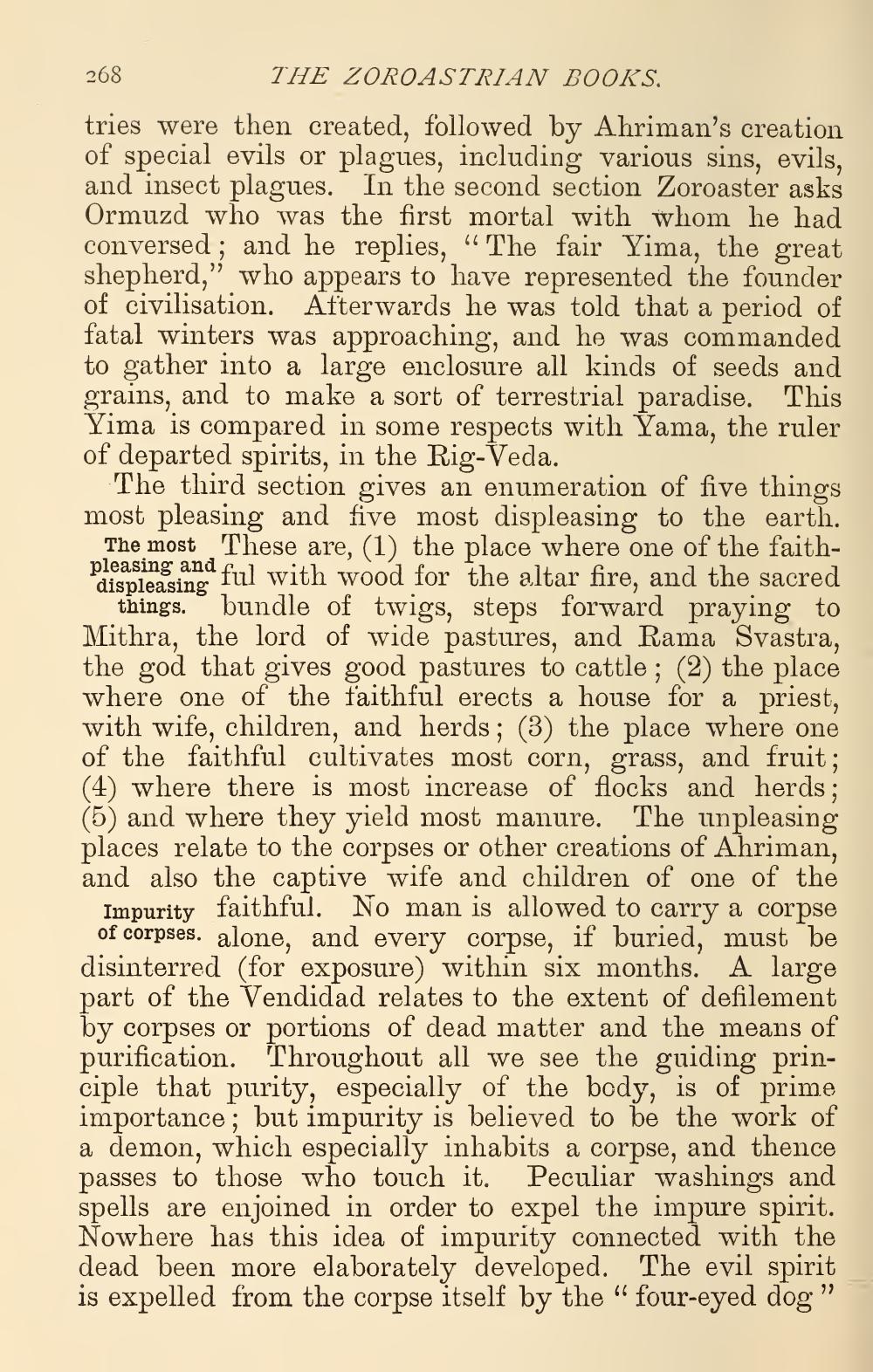________________
268
THE ZOROASTRIAN BOOKS. tries were then created, followed by Ahriman's creation of special evils or plagues, including various sins, evils, and insect plagues. In the second section Zoroaster asks Ormuzd who was the first mortal with whom he had conversed; and he replies, “The fair Yima, the great shepherd,” who appears to have represented the founder of civilisation. Afterwards he was told that a period of fatal winters was approaching, and he was commanded to gather into a large enclosure all kinds of seeds and grains, and to make a sort of terrestrial paradise. This Yima is compared in some respects with Ħama, the ruler of departed spirits, in the Rig-Veda.
The third section gives an enumeration of five things most pleasing and five most displeasing to the earth.
The most These are, (1) the place where one of the faithpleasing and ful with wood for the altar fire, and the sacred displeasing
things. bundle of twigs, steps forward praying to Mithra, the lord of wide pastures, and Rama Svastra, the god that gives good pastures to cattle; (2) the place where one of the faithful erects a house for a priest, with wife, children, and herds; (3) the place where one of the faithful cultivates most corn, grass, and fruit; (4) where there is most increase of flocks and herds; (5) and where they yield most manure. The unpleasing places relate to the corpses or other creations of Ahriman, and also the captive wife and children of one of the
Impurity faithful. No man is allowed to carry a corpse of corpses. alone, and every corpse, if buried, must be disinterred (for exposure) within six months. A large part of the Vendidad relates to the extent of defilement by corpses or portions of dead matter and the means of purification. Throughout all we see the guiding principle that purity, especially of the body, is of prime importance; but impurity is believed to be the work of a demon, which especially inhabits a corpse, and thence passes to those who touch it. Peculiar washings and spells are enjoined in order to expel the impure spirit. Nowhere has this idea of impurity connected with the dead been more elaborately developed. The evil spirit is expelled from the corpse itself by the “four-eyed dog."




